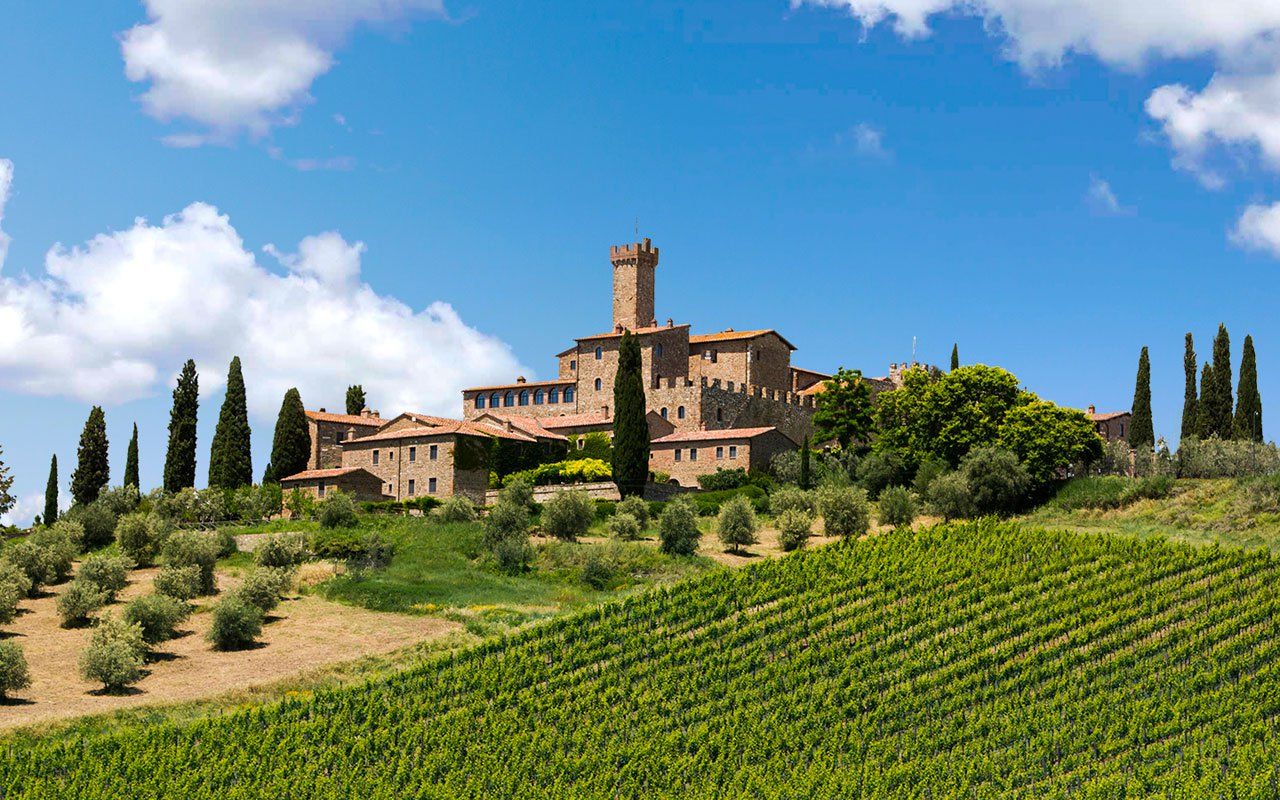There was much to discover at Louis Latour Agencies annual tasting, particularly if you took the time out to take a deep dive into the wines and the history behind Tuscany’s Castello Banfi.
I could think of worse ways to spend a chilly Thursday morning in January than at the Louis Latour Agencies portfolio tasting. This year it included a fascinating spotlight on Castello Banfi. The Mariani family has just celebrated its 40th anniversary after founding the estate whilst operating as wine merchants in the Big Apple. The outfit now operates with vineyards in Montalcino, Bolgheri, Chianti (and Classico) and IGT Toscana. They joined the Latour portfolio in April 2018.
Whilst the region is in itself, steeped in rich cultural history (Montalcino was once an important stop-off from Rome to the Britain during the middle ages), Banfi is considered by many to be leaders in sustainability. “We are a 360º agricultural project,” says Jgor Marini, regional manager.
As Banfi produce wines from this beautiful, picturesque region, the family seem to combine an intense understanding of the history of Montalcino, with sustainable and forward thinking look to the future through technology and innovation.

Castello Banfi’s Jgor Marini explains the history and the philosophy of this classic Tuscan producer
See it, say it, sort it
A key area of innovation for the Banfis is how it uses different sorting machines and technologies in order to select the right grapes it wants to make for its different styles of wine. Now when we first start learning about wine, we are taught the pros and cons of hand harvesting versus machine. Hand harvesting we are told ensures a greater quality selection of grapes and is particularly necessary for vineyards found on steep hillsides, but it’s also expensive.
Machine is quicker and cheaper, but with a poor capacity to sort the good fruit from the bad. You will also end up with loads of MOG (bits of plastic or nails from posts – anything that could get caught up in the vine). Labour cost implications continue to be a factor for all businesses, wine trade or not, and many in the wine game are turning to mechanical harvesting. Particularly, in Banfi’s case, where they have rigorous, hi-tech sorting systems in place to mitigate any potential unwanted fruit, or MOG picked up mechanically.
The team utilises one, or a combination of up to three sorting systems when the grapes arrive at the winery. They include:

Grapes waiting to be sorted at Banfi
The Manual sorting belt which is only used for handpicked fruit. This system features two selection areas, pre and post de-stemming; bunch and berry sorting, a sieve for the removal of MOG followed by a light crush of berries using rotor blades that does not damage seeds and avoids unwanted bitterness.
The Tribaie. Perhaps in more challenging years, the Tribaie is most effective. This is genius. Must is held in a chamber with a fixed sugar content. The Tribaie processes grapes, eliminating any MOG whilst deciding the quality of berries at the same time. Grapes with high/desirable sugar content fall to the bottom of the must tray, those that do not boast enough sugar/ripeness float to the top and are deposited into a separate vat.
This allows for separate vinifications based on ripeness at the sorting stage. It is a system that uses density to dictate the quality. After learning that Banfi’s flagship Brunello is comprised of over 50 parcels, one would think this is where the Tribaie comes into its element.
It’s also worth noting that in years of high quality and consistency across the board, the Tribaie is arguably not as relevant, nonetheless, an impressive and efficient method of sorting fruit.
The Optical Sorter. Then on to something a little more familiar (to me anyway), the optical sorter which is dedicated solely to machine harvested grapes. Arguably the most efficient at eliminating MOG. LED lights can be set and programmed to choose only perfectly ripe berries based on size, shape, colour and structural integrity (i.e. has the skin split?), partially crushed berries can also set to make the cut as well.
Castello Banfi’s commitment to its carbon footprint has now seen it achieve the SA8000 certification, a guarantee of a sustainable supply chain from top to bottom. It has also planted up to 900 hectares of cypress trees and cork oaks’ to offset C02 and moved to lightweight bottles.
But how does all that attention to detail then all play out when it comes to the wine. The special Banfi masterclass at the tasting allowed us to taste through a range of wines covering its estate.
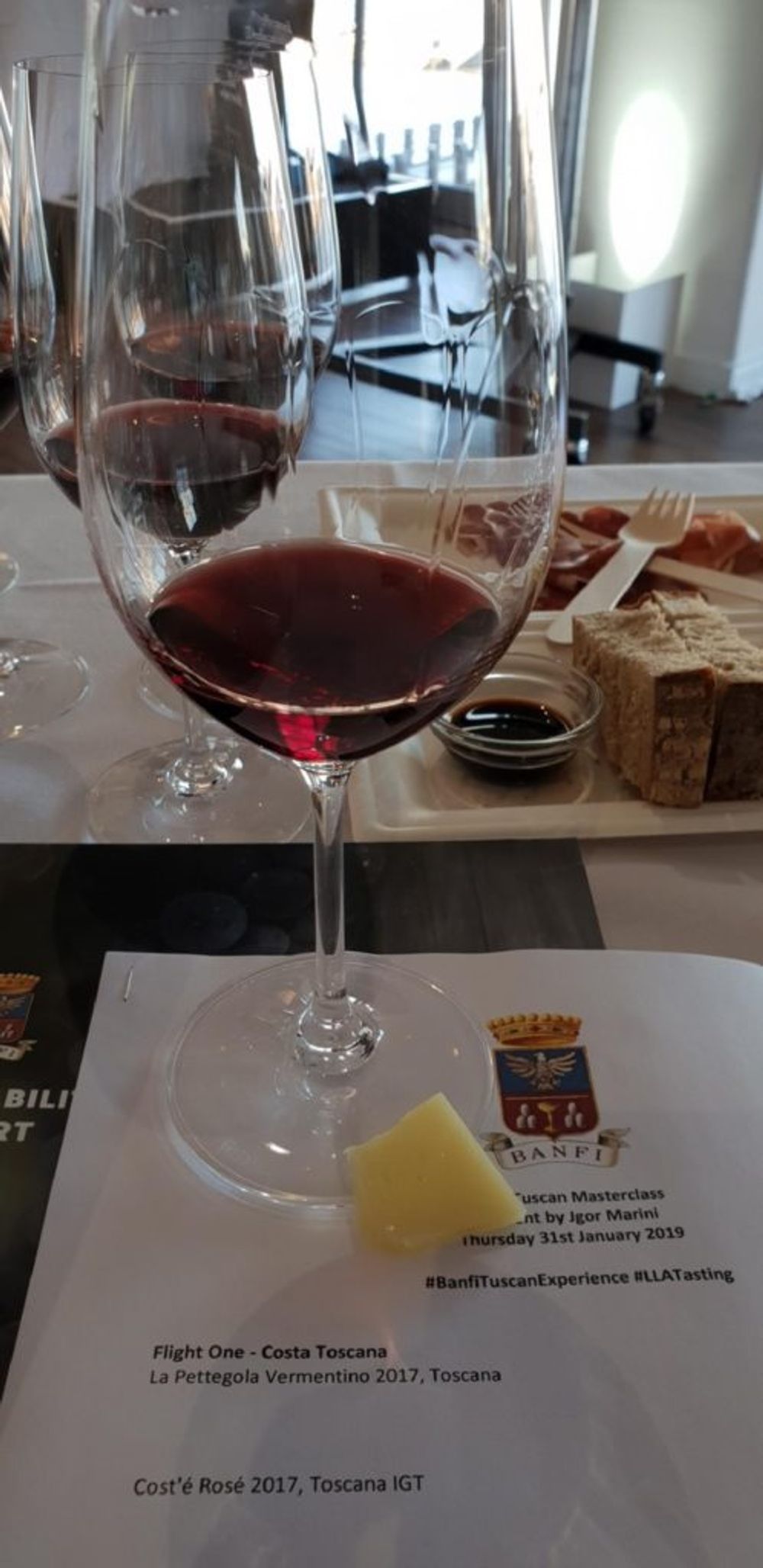
Flight 1: Costa Toscana
La Pettegola, 2017, Vermentino, Toscana
A 100% Vermentino here, with a cooling freshness and subtle notes of peachy, stone fruit. Medium to full bodied and perfumed across the palate. A vein of heat runs through the finish, adding to this wines richness. Apparently Pattegola is a colloquialism for a gossip girl or chatty lady, something Marini suggested may be the case after a couple of glasses…
Cost’é Rosé, 2017, Toscana
This is a blend of Sangiovese and Vermentino with a pale, Provencal familiarity on the eye. A dusting of soft, ripe red fruits up top with pithy-er grapefruit bitterness in the mouth. Good freshness, chalky grip. A very good rosé; one that highlights its protagonists really well, crisp acidity from Sangiovese, softened and rounded by the Vermentino, balanced and moreish.
Flight 2: Chianti
Chianti Classico, 2016
A wine that sees around nine months oak. Bursting with lively sour cherry on top of a mineral, iron, blood orange tinge. Jgor Marini suggested this with a semi-aged Pecorino, I obliged, of course. This wine is about grace. Well structured but not overdone in any aspect. A good frame softened by a salty cube of delicious Pecorino.
“Classico tends to be more complex. It’s not a matter of power but elegance. Brunello gives more alcohol to the wine, also more rustic style with firmer tannins,” said Marini.
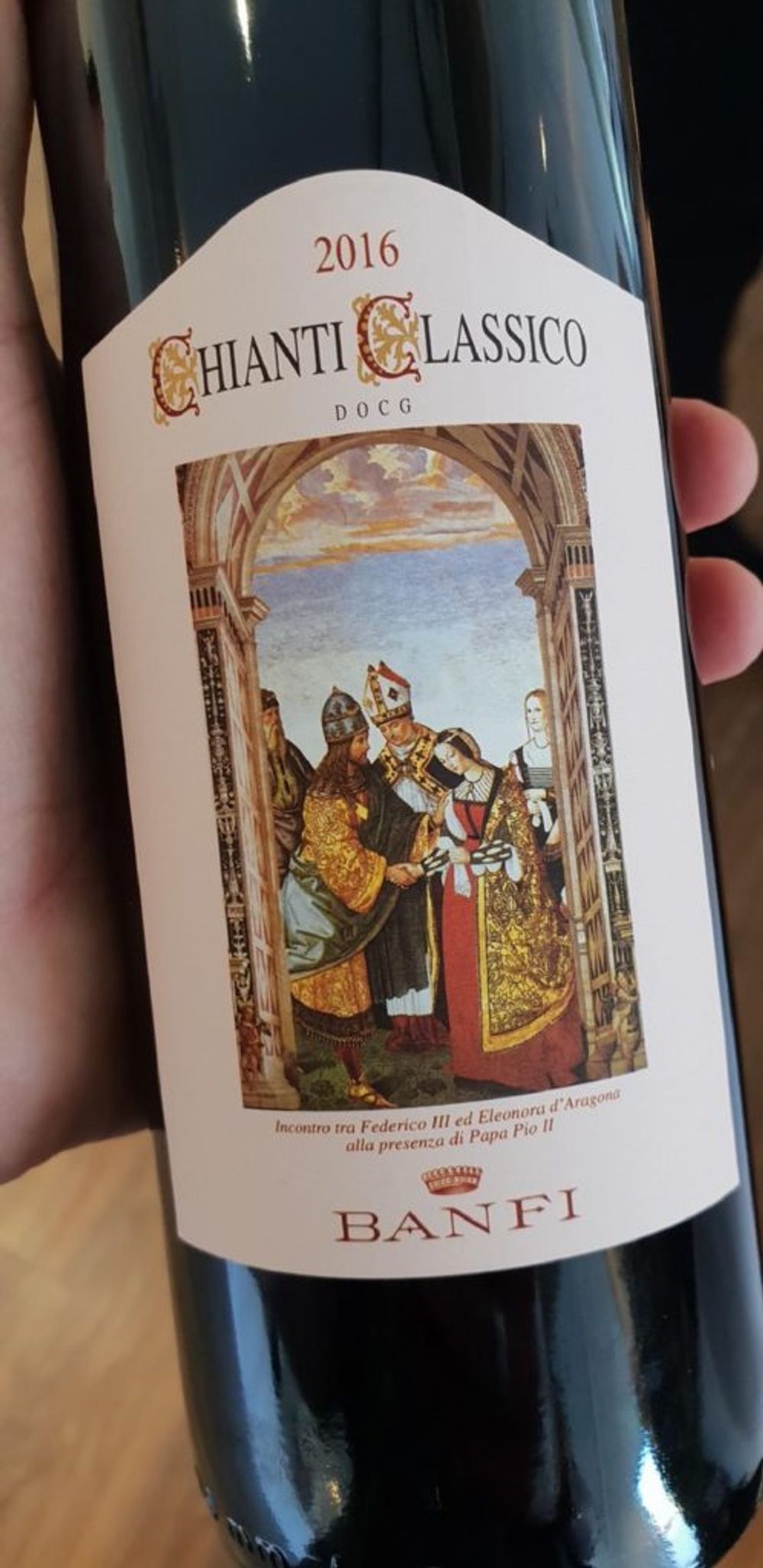
Chianti Classico Riserva, 2014
Riserva’s, which must be aged for at least a year longer than the aforementioned Classico, complete with at least half a degree more alcohol. The 2014 sees a full year in oak followed by six months bottle age. For the tricky 2014 vintage, Marini said “we eliminated zones of our vineyards that didn’t work with our philosophy, we only work with the fruit that is right for us and this wine”.
A similar, bloody red fruit profile to the 2016 Classico, but more depth in the way of an earthy rusticity. Firm, dusty tannins and further complexity in the mouth with a long, persistent finish carried by its freshness.
Flight 3: Montalcino
San Angelo, 2017, Pinot Grigio
Just the free run juice used for this Pinot Grigio. Faint, grassy notes and honey support a candied lemon nuance. Unctuous. A Pinot Grigio that delivers generosity and power on the palate. There is a welcomed stemmy-bitterness that is wrapped up in a rich, warming fat of viscosity. Marini said it is a challenge to do a premium Pinot Grigio in this sub-region, but it calls the wine San Angelo “as we believe that it is a true reflection of its place”. Gotta say, its bloody good!
Brunello di Montalcino, 2013
Fermented in both stainless steel and wooden vats. Banfi put a lot of emphasis on this Brunello being approachable and ready to drink from the beginning. Medium garnet colour. Cowskin, sawdust on the nose with faint, plumy fruit. Bags of grip and texture. A wine “born for food matching,” said Marini. Back to a sense of minerality and iron that manifests on the palate. Approachable, yes, but needs food.
Poggio alle Mura, 2013, Brunello di Mantalcino
This one’s produced from multiple clones. A confected, sweeter profile than its 2013 counterpart. Vanilla, baking spice and cinnamon all surface. More fruit, more opulence and generosity with a similar framework and structure to its little brother.
Poggio all’Oro Riserva 2010
“Perhaps our best wine yet,” claimed Marini, “we have only produced six of these in the last 18 years.” The juice spends 36 months in 60 and 90 hector litre vessels, with a further 12-18 months in bottle. Medium intensity garnet, moving into a warm, seductive terracotta. Black truffle. An enticing and curious controlled oxidative character. Sweet, ripe red fruits compliment a dried, pruny nature. A velvety yet robust wine with a lot more to give in years to come.
Florus 2016
A sweet wine to finish. Classically familiar tropical Muscat nuances of lychee and elderflower cordial. Critically, the sweetness is not cloying and delivers hedonism coupled with a clean, lean finish. I tried to dip my Cantucci in this and ended up dropping it by accident. Anyway I left it to soak for a minute or so before fishing it out, outrageously good!
In conclusion, Castello Banfi should surely be considered leaders in following practical, realistic and effective sustainable practices in the wine industry. As Marini said, it’s all about taking a 360º’ holistic approach to it agro-ecosystem from its plums and cherry trees through to its wheat and spelt, to breeding local native donkeys and then taking that through to the efforts it also makes in education and support for its team.
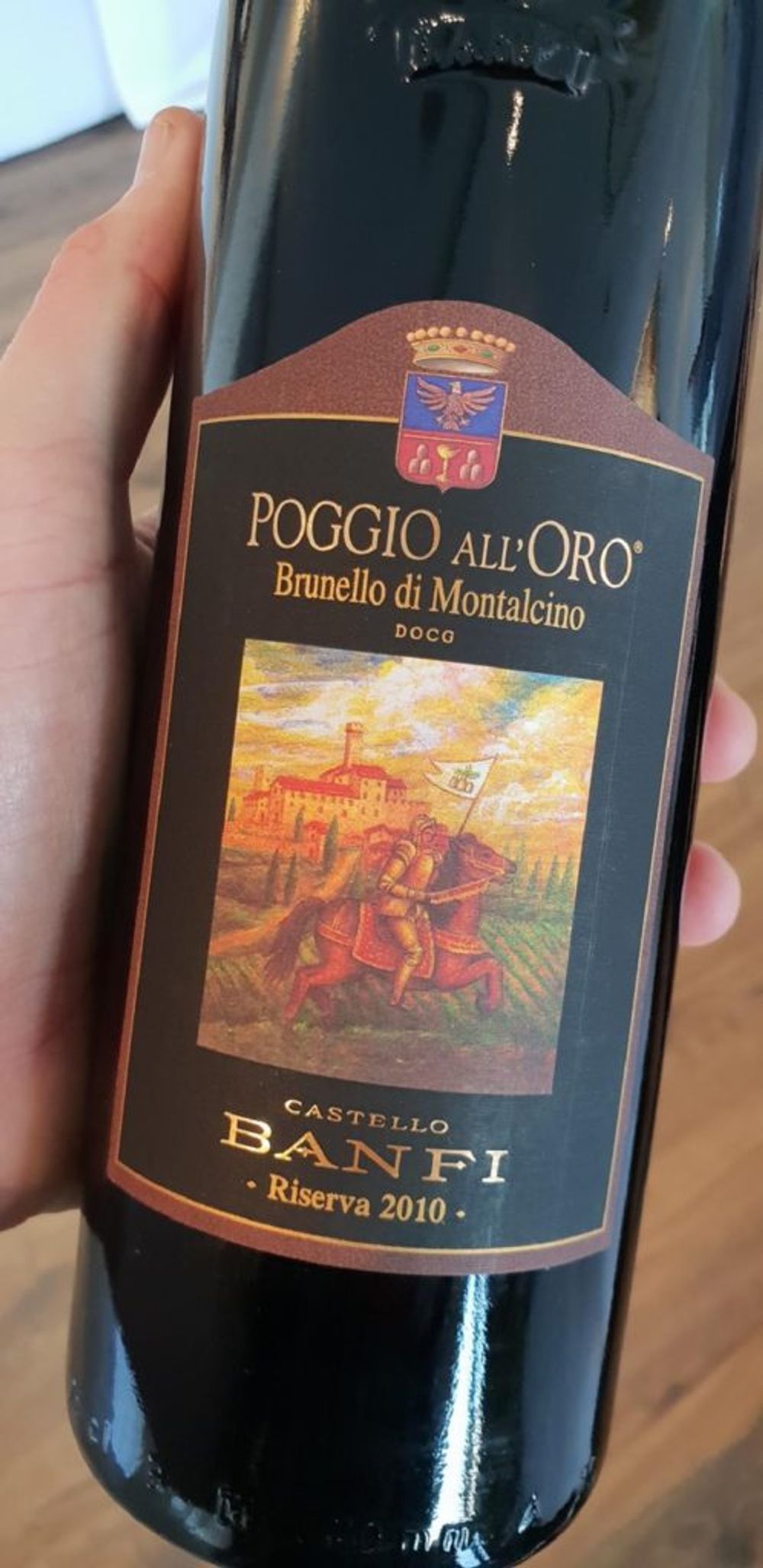
What’s new from Louis Latour?
I also had the opportunity to take a look at some of the new wines and vintages from the rest of the Louis Latour Agency portfolio:
Maison Louis Latour, Mâcon-Lugny, Les Genièvres, 2017 (new vintage) £10.26
It’s always a real pleasure to taste through the Latour Burgundy offering, plenty of choice and new releases from the 2017 vintage. Bang for your buck, this wine is singing. A honeyed, lanolin nose with patisserie notes bringing up the rear. Lean yet brilliantly balanced sweetness of oak and zesty, citrus fruit.
Henry Fessy, Les Brulées, Brouilly, 2016 (new wine) £7.63 (ex-cellar)
A bright and blue Beau’! Les Brulées is a 0.7 hectare vineyard boasting 60-70 year old vines. Bags of freshness. Good minerality with a very friendly,honest and approachable fruit set.
Vidal-Fleury, Côte-Rôtie Brune et Blonde, Rhône Valley, 2016 (new wine) £39.34
Made from co-plantings of Syrah and Viognier. From Côte Brune and Blonde. This wine smells like a blueberry rolled in cracked black pepper. Sweet, ripe fruit on the palate with a full body and a meaty finish. This has so much more to give but it’s all there, cant wait to re-try in a few years!
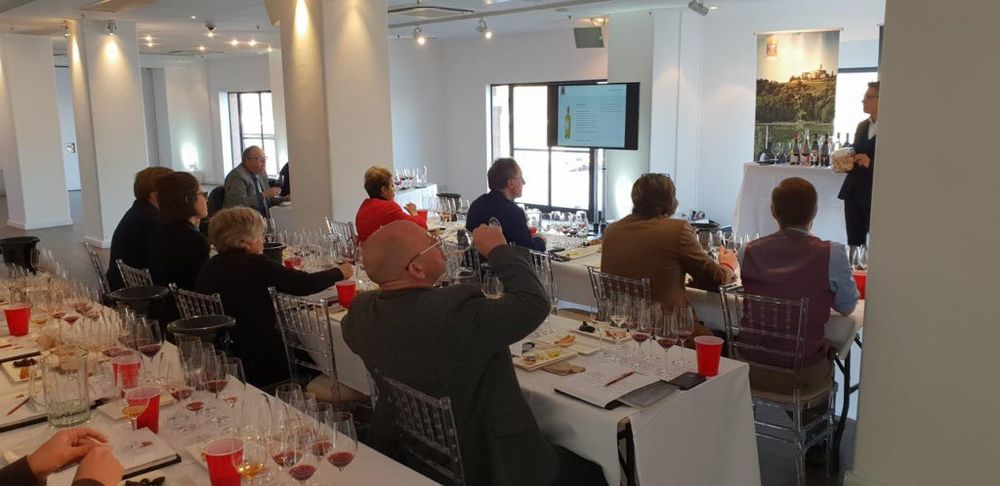
Domaine Michel Redde, Pouilly-Fumé, Les Bois de Saint-Andelain, Loire Valley 2017 (new vintage) £26.49
A ‘single-terroir’ wine from the Silex soils of Pouilly Fumé. A nose of bruised apple and quince. The wine delivers punch. Oodles of texture, and a warming heat. Mango skin and grapefruit flavours are seamlessly carried along by sharp, pinpoint acidity that does not go anywhere in a rush. Tasted twice. That good.
Wakefield, St Andrews, Shiraz, Clare Valley, 2015 (new vintage) £22.77
Classic Clare, wonderfully elegant, lifted florals line up ahead of smoky leather. So much energy, almost a nervous energy though, tension. Subtle cedar in the mouth, opulent cassis. Layers of flavour and dimension in this one, lengthy and drinking beautifully.
Seresin, Chiaroscuro, Marlborough, 2018 (new wine) £12.66
An Alsatian blend of Pinot Gris (37%), Riesling (55%) and Gewürz (8%). Fruit is collected by hand and all varieties are combined in the vineyard. Whole bunch pressing and fermentation took place naturally in puncheons. Medium intensity of aromatics, the old faithful lychee-coconut with a sprinkle of ginger. A dry, bitter finish rounds off a fairly light, yet complex body. An intriguing tipple that encapsulates concentration, complexity and texture.
All in all a great way to hideaway on a cold January day.
- You can read more from Harry Crowther at his own website, www.grapetimes.co.uk.
